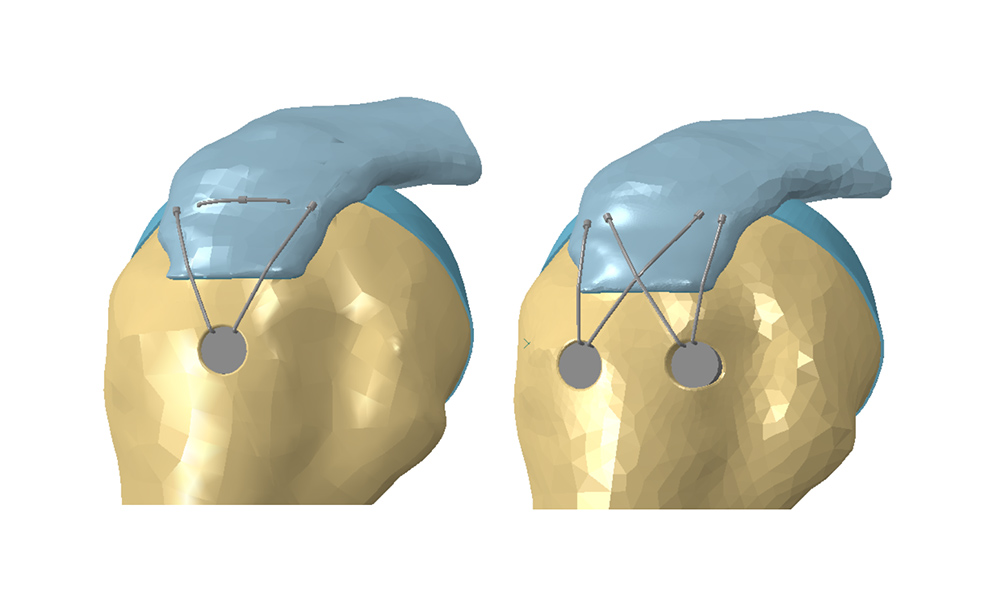
Biomechanical analysis of the tear and re-tear mechanisms of the shoulder rotator cuff muscles

Project name: Biomechanical analysis of the tear and re-tear mechanisms of the shoulder rotator cuff muscles
Research group: Mechanical Design
Objective
Description
Due to its anatomical structure, the glenohumeral joint, commonly known as shoulder joint, is the most frequently dislocated joint in the human body and a site of many pathologies. As the average life expectancy increases, tears of the rotator cuff (RC) muscles, the primary active stabilizers of the joint, are likely to play a major limiting role in people’s’ quality of life. Notice that the prevalence of RC tears increases with age, being higher than 60% for a population over 60 years-old. The surgical treatment of a RC tear consists in securing the tendon to the bone through transosseous sutures or anchor sutures, with different repair constructs, which are still continuously evolving to improve the outcome of the procedure. Despite the good to excellent short-term results of the RC repair, failure to heal has been reported in 20% to 95% of the patients.
Considering multibody and finite element formulations, the aim of this project is to study the mechanisms of tear and re-tear of the RC tendons.
To tighten the frontier between the Medical and Engineering societies, this study is conducted in conjunction with the Faculty of Medicine of the University of Lisbon.
References
-
Quental, C., Folgado, J., Monteiro, J., Sarmento, M., 2016. Full-thickness tears of the supraspinatus tendon: A three-dimensional finite element analysis. Journal of Biomechanics 49(16): 3962-3970.
Contact Person
Carlos Quental
